TRAINING
Introductory and Advanced Software Courses
Designed to Engage and Empower
Software Training
BRO offers a variety of software training classes designed to meet the demands of ASAP and APEX users. Investing in a software tutorial is an efficient way to increase your knowledge and skill in operating the program. Whether you are a first time optical software user, require a refresh an concepts and techniques, or require in-depth instruction, BRO’s courses are sure to meet your requirements.
Each course consists of a mix of online interactive instruction and self-paced work conducted offline. Participants are provided the latest version of BRO’s software applications, course materials, example files, and more. Courses are taught by BRO’s senior optical engineers, who are experts in their fields and skilled instructors. Customized training is available.
In addition to our live course instruction, BRO now offers a way for the busy professional to access training on their schedule. BRO Software Academy is our new On-Demand Training Platform. Current courses include: ASAP Fundamentals Course and ASAP Stray Light Advanced Course. Plus, more on-demand courses are on the way!

Now available
ASAP Fundamentals
ON-DEMAND
The ASAP Fundamentals (Intro) Course is now available on-demand! Designed for the working professional, this self-directed option includes all the instruction and material found in the traditional “live” course. It includes over 19-hours of video instruction and supplemental course material downloads.
NOW AVAILABLE
ASAP Stray Light Course
ON-DEMAND
This advanced course provides the knowledge and skills needed to conduct stray light analysis with ASAP. The class covers scattered light, ghost reflections, thermal emissions in infrared systems, edge scatter, and wide-angle diffraction. Participants balance theory with hands-on experience through practice sessions.
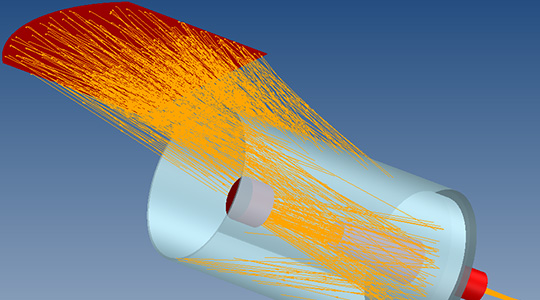
Traditional Training Courses
ASAP Courses 2025

ASAP INTRO
This 3-day introductory course introduces attendees to the full list of ASAP features. It also covers approaches to solving pre-defined imaging and illumination problems.
August 19-21, 2025
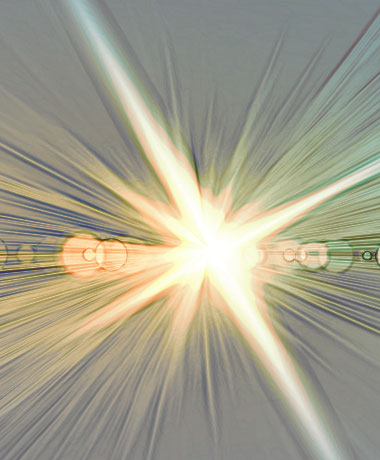
ASAP STRAY LIGHT
This 3-day Advanced Course provides the knowledge and skills required to perform stray light analysis with ASAP. It cover scattered light, ghost reflections, and more.
June 17-19, 2025

ASAP Wave Optics
This 3-day Advanced Course covers source construction methods and the ASAP approach to coherent ray tracing. Attendees learn Gaussian beam fundamentals and more.
April 8-10, 2025
Upcoming Training Courses
APEX Courses 2025
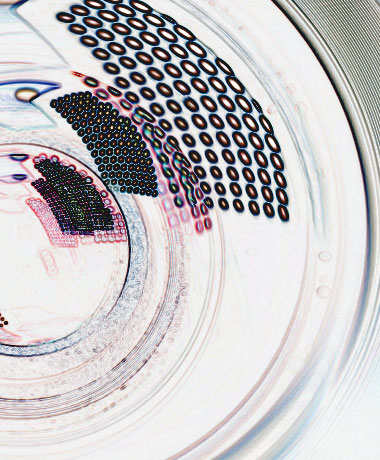
APEX INTRO
This 3-day course guides attendees through APEX features and functionality. It also covers basic system builds and system analysis.
April 15-17, 2025
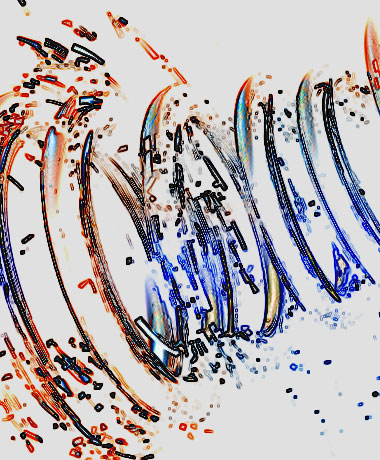
APEX INTRO
This 3-day course guides attendees through APEX features and functionality. It also covers basic system builds and system analysis.
June 24-26, 2025

APEX Intro
This 3-day course guides attendees through APEX features and functionality. It also covers basic system builds and system analysis.
September 9-11, 2025
Increase Your Skills & Efficiency
BRO COURSES
Investing in a BRO software tutorial is an excellent way to become a more capable and efficient optical designer. All courses — Introductory and Advanced — are taught by a Senior Optical Engineer from BRO. Each instructor is an expert in their field. They bring the knowledge and real-world experience to enhance and inform their instruction.
The majority of courses include three-days of instruction. Courses may run over consecutive days or once a week over a three week period to minimize workflow disruption. Consult the training schedule for detailed information.
Pricing
Introductory Course with Real-Time Instructor: $1700 for license seat holders with a valid software support (maintenance) plan; $2400 for non-subscribers. Cost includes all course materials, example files, scripts, and INR files.
ON-DEMAND Introductory Course: $1,000 for license seat holders with a valid support (maintenance) plan; $1,700 for non-subscribers. EDU students email for pricing. Cost includes 30-day access plus all course materials.
Advanced Course with Real-Time Instructor: $2400 for license seat holders with a valid software support (maintenance) agreement; $3100 for non-maintenance members. Cost includes all course materials, example files, scripts, and INR files.
ON-DEMAND Stray Light Advanced Course: $1,500 for license seat holders with a valid support (maintenance) plan; $2,200 for non-subscribers. EDU students email for pricing. Cost includes 45-day access plus all course materials.
All approved University instructors who use ASAP or APEX for student instruction, may attend Introductory and Advanced Courses at no cost, contact BRO for details.
Customized Training Available
If you or your team are in need of immediate optical software training, BRO offers customized team training and individual tutoring sessions. Work with a member of our team to define current proficiency levels and discuss applicational needs. Our lead instructor will identify the topics and deliverable needed and provide an outline of your customized course. Pricing varies. Contact sales@breault.com to get started.
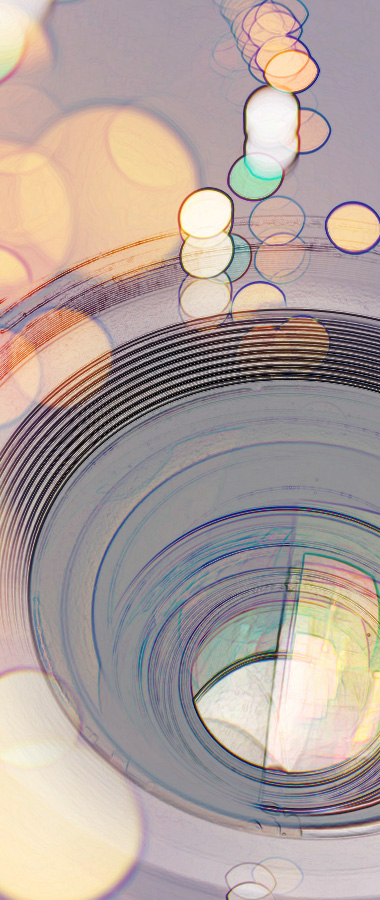
Expand Your Knowledge
Course catalog
This tutorial provides an introduction to using the APEX optical design and analysis program through hands-on exercises, demonstrations, and lectures. Students follow the APEX workflow procedure to design and analyze a variety of illumination and imaging systems.
COURSE OVERVIEW
Students learn to apply the 4-Step Workflow to accurately design and analyze common illumination systems, such as conic reflectors, lightpipes, and CPCs. The integrated SolidWorks CAD capabilities are used to generate a wide range of system components. APEX Wizard’s are introduced for adding light sources, such as LEDs, to system models, and for creating high-accuracy optical geometry — such as aspheres. Course materials based on theory as well as practical experience are engaged to accompanying hands-on practice sessions. Students learn how to perform radiometric and photometric analyses to access the performance of optical systems.
COURSE OUTLINE
- Overview of the 4-Step process
- Creating geometry in CAD
- Creating geometry using the Optical Manager
- Applying optical properties
- Refraction, reflection, absorption, and scatter
- Basic radiometry and photometry
- Total internal reflection
- Fresnel reflection and transmission
- Designing conic reflectors
- Faceting reflectors
- Designing geometry for reuse
- CPCs, prisms, lenses
Familiarity with geometric and optical concepts is beneficial but not required. This a three-day course with limited participation.
The Introductory Course instructs ASAP users on approaches to solving pre-defined imaging and illumination problems. Designed to acquaint the new user with the full list of ASAP features leading to a basic competency. The course is a balance of hands-on exercises, demonstrations, and lecture.
OVERVIEW
By guiding students through straightforward examples of both imaging and non-imaging systems, attendees learn both fundamental ASAP capabilities and methods and procedures for solving the most common types of optical problems. Near the end of instruction, several advanced simulation and analysis concepts — such as ray splitting and ray scattering — are introduced.
COURSE OUTLINE
- ASAP menus and dialog boxes, including the Builder, Workflow Manager, Scripting Language, and integrated translators – including: ASAP/IGES, ASAP/OSLO, ASAP/ZEMAX
- Optical system modeling, including: optical properties, system geometry, and object database construction
- Source modeling, including: physical, spatial and angular definitions of incoherent point and extended sources, as well as coherent point sources
- Numerical and graphical verification of system and source models
- Ray tracing and analysis
- Several advanced simulation and analysis concepts, such as: object bounding, ray splitting, and ray scattering
Familiarity with geometric and optical concepts is helpful for attendees but is not required. This three-day course is currently taught online with instructor Dr. Jon Herlocker.
BRO’s Stray Light Advanced Course gives participants the knowledge and skills needed to conduct stray light analysis with ASAP. The class covers scattered light, ghost reflections, thermal emissions in infrared systems, edge scatter, and wide-angle diffraction. Participants balance theory with hands-on experience by applying each lesson in a series of practice sessions.
OVERVIEW
The course covers standard methods for finding and correcting stray light problems in existing systems, as well as designing systems with low stray light levels. Information on the scatter characteristics of optical and mechanical surfaces is presented. A detailed study of how to efficiently perform quantitative stray light calculations is done, which includes in-depth coverage of the ASAP commands used for stray light analysis and the interactions between them. Analytic formulas that are useful for performing top-level stray light estimates and spot checks on quantitative stray light calculations are also presented.
PRE-REQUISITES
- Completion of BRO’s Introductory ASAP Course or equivalent knowledge and experience
- Ability to build and view elementary systems with surface and edge-based entities
- Ability to define and trace rays from various sources
- Ability to perform power, irradiance, and intensity calculations
- Ability to comfortably write and run command scripts and macros
- Experience in the use of the CONSIDER and SELECT commands in ASAP to isolate objects and rays
COURSE OUTLINE
- What is Stray Light and why is it important and where does it come from?
- Stray light design procedures
- The importance and use of stops
- Elementary front baffle and sunshade design
- Performing ghost calculations
- Design techniques for reducing stray light from ghosts
- Introduction to stray light calculations
- Elementary radiometry and radiation transfer
- Introduction to scatter characteristics of surfaces
- Characteristics of scatter measurements
- Using the ASAP BRDF fitting utility
- Quantitative descriptions of stray light performance
- Top-level stray light calculations with a pocket calculator
- ASAP scatter commands and their use
- Scatter from contaminated mirrors and lenses
- Evaluating the accuracy of stray light calculations
- Calculating ghost irradiance
- Stray light calculations for infrared systems
- Calculation of stray light from edges
- Stray light considerations for spectrographs, laser systems, coronagraphs, and chopped systems
- Scatter from anisotropic surfaces
This advanced tutorial is a three-day course. If you are unsure if you meet the requirements, please email the instructor prior to enrolling in the class.
The Wave Optics Course gives participants the knowledge and skills needed to perform wave optics analysis with ASAP. The class covers propagating fields in ASAP as well as polarization analysis. Participants balance theory with hands-on experience by applying each lesson in a series of practice sessions.
COURSE OVERVIEW
The course covers source construction methods and the ASAP approach to coherent ray tracing. Participants learn how to correctly sample objects during ray tracing, how to propagate fields past edges and through apertures, when and how to decompose the current field into a new set of beams, and how to recognize and correct field propagation problems Proper coherent flux calculations as well as trouble-shooting procedures are also presented.
PRE-REQUISITES
- Completion of BRO’s Introductory ASAP Course or equivalent knowledge and experience
- Ability to comfortably write and run command scripts and macros
- Basic knowledge of physical optics
COURSE OUTLINE
- Gaussian beam fundamentals
- The concept behind the ASAP coherent field propagation
- ASAP coherent commands and their use
- How to establish and verify coherent sources in ASAP
- How to propagate coherent fields through optical structures
- How to calculate the amplitude and phase of coherent fields
- Correct sampling techniques during source construction, propagation, and field calculations
- Calculation of impulse response and optical transfer functions
- Determining the amounts of field clipping and its effects on the field
- How to input arbitrary fields
- How to couple fields into fibers and wave guides
- How to handle spatial and temporal coherence
- How to detect and correct problems
- Coherent radiometry
- Hands on odeling of imaging systems, diode lasers, interferometers, gratings, etalons, and more
- Modeling polarization components
- Creating polarized sources
- Polarization ray tracing
- Polarized flux calculations
The Wave Optics class is a three-day course. Participants are limited. If you are unsure you meet theses requirements, please email the course instructor prior to enrolling in the class.
The Ghost Analysis in Imaging Systems Course gives participants the knowledge and skills necessary to perform analysis of imaging systems using ASAP. Participants balance theory with hands-on experience by applying each lesson in a series of practice sessions.
OVERVIEW
This course covers methods for identifying sources of ghost reflections and other forms of stray light that occur in imaging systems, such as cell phone cameras and projection systems. Information on attributes of imaging systems, such as stops and pupils, are discussed. A detailed study of locating in- and out- of field sources of unwanted light is performed. This includes in-depth coverage of ASAP commands and the creation of templates for analysis which students can use when returning to work.
PREREQUISITES
- Completion of BRO’s Introductory ASAP Tutorial or equivalent knowledge and experience
- Ability to build and view elementary systems with surface and edge-based entities
- Ability to define and trace rays from various sources, and perform power, irradiance, and intensity calculations
- Ability to comfortably write and run command scripts and macros
- Experience in the use of the CONSIDER and SELECT commands in ASAP to isolate objects and rays
COURSE OUTLINE
- Introduction to the concepts, techniques and philosophies of stray light analysis
- The importance, use and locations of stops and pupils
- Configuring the ASAP model for stray light analysis
- Configuring source models for stray light analysis
- ASAP commands to analyze ghost images
- Methods and procedures for ghost analysis
- Techniques for reducing or eliminating ghosts
- Comprehensive exercise
This Advanced Tutorial is a three-day course. Participation is limited. If you are unsure you meet the course requirements, please email the instructor prior to enrolling in the class.
The Automotive Lighting Illumination Modeling Tutorial concentrates on the application of BRO’s ASAP Optical Software package to the development of automotive illumination systems. It provides participants the knowledge and skills needed to model the optical performance of automotive illumination systems that most benefit their particular workflow. Attendees gain on-hands experience through a series of practice sessions.
OVERVIEW
Basic knowledge about automotive lighting is not needed but beneficial. The course covers the simulation and analysis of automotive illumination systems based on ASAP. Primary emphasis is on exterior lighting systems. However, interior applications are discussed, including lightpipe designs. A brief introduction of terminology, regulations and underlying physics for automotive illumination is given.
The class addresses how best to use ASAP in each step of the automotive lighting design process including: feasibility, initial design, final design, tolerancing, and troubleshooting. Examples of actual lamp designs executed by BRO engineers are shown. Applications of sources from traditional incandescent to LED and HID sources are discussed. Additionally, as many automotive lighting users rely on internally developed programs to design their lighting systems, the tutorial covers the use of VBscript within ASAP to enhance interactions between ASAP and external programs, as well as use of ASAP in batch mode.
PRE-REQUISITES
- Completion of BRO’s Introductory Tutorial or equivalent knowledge and experience
- Familiarity with a CAD package
COURSE OUTLINE
Automotive Illumination Basics
- Review of relevant optical physics
- Review of photometry principles
- Review of regulations and testing methods
Automotive Illumination Design Process with ASAP
- Source Modeling Review
- Feasibility
- Initial Design
- Final Design and Package Verification
- Tolerancing
- Troubleshooting
Integrating ASAP into your Automotive Illumination Design Process
- Scripting capabilities in ASAP for interfacing with external programs with particular emphasis on VBscript
- Using ASAP RabetP.exe in batch mode for enhanced interoperability with other programs
This is a three-day course with limited participation. If you are unsure you meet the course requirement, please email the instructor before enrolling.
BRO’s Illumination System Design Tutorial gives participants the knowledge and skills needed to use ASAP and ReflectorCAD to design, model and analyze general illumination systems.
COURSE OVERVIEW
Learn illumination and optics principles and how those principles are connected with illumination systems, including the design of luminaires, lightpipes, lightguides, headlights, taillights, and display systems. SAE and ECE standards are used in the design process with the use of the External Lighting Test Module (ELTM). Participants access the BRO light Source Library for a number of the sources used in the modeling. Theory and analytical methods are presented to provide the participants with the underlying design principles. Participants balance theory with hands-on experience by applying each lesson in a series of demonstrations and practice sessions.
PRE-REQUISITES
- Completion of the ASAP Introductory Tutorial or equivalent knowledge and experience
- Ability to build and view elementary systems with surface and edge-based entities
- Ability to define and trace rays from various sources, and perform power, irradiance, and intensity calculations
- Ability to comfortably write and run command scripts and macros
- Basic knowledge of CAD software is useful but not essential
COURSE OUTLINE
- ASAP commands and their use in illumination systems
- Importance of radiometry and photometry
- Illumination with imaging and non-imagining optics
- Design procedures for elliptical, parabolic, and edge-ray reflectors
- Maximizing uniformity and efficiency
- Using looping structures to automate the procedure of investigation
- Importance and use of surface roughness for illumination
- Understanding the difference between far-field and near-field distributions
- Overview of total-internal reflection (TIR) systems for lightpipes/lightguides
- Modeling sources in ASAP, including incandescent sources, LEDs, and laser diodes
- Design of an arc source in ASAP
- Specular and diffuse luminaire design in ReflectorCAD and ASAP
- Advanced luminaire design algorithms
- Working with CAD in illumination design
- Microstructure modeling with ASAP
- Fabrication issues of microstructures
- Designing a micro-structured lightguide to be used as a display
- Methods to obtain light output in the desired areas from lightguides
- Design principles for reflectors and lenses in headlight design
- Novel reflector design techniques for headlights
- Design considerations for lightpipes, lightboxes, taillights, and headlights
This is a four-day course and participation is limited. If you are unsure you meet the course requirements, please email instructor before enrolling.
The main focus of this course is volume light scattering and fluorescence with emphasis on, but not restricted to applications in life sciences. The tutorial gives participants the knowledge and skill needed to model the optical performance of biomedical systems and instruments with ASAP. Participants balance theory with hands-on experience by applying each lesson in a series of practice sessions.
COURSE OVERVIEW
The course covers the simulation and analysis of volume light scattering and fluorescence, based on ASAP. A thorough introduction into the underlying physics is provided. Basic knowledge about light scattering and fluorescence is not required. Basic concepts are explained but theoretically and in practice sessions. Standard measurement techniques are discussed and simulated using ASAP.
PRE-REQUISITES
- Completion of the ASAP Introductory Tutorial or equivalent knowledge and experience
- Ability to build and view elementary systems with surface and edge-based entities
- Ability to define and trace rays from various sources, and perform power, irradiance, and intensity calculations
- Ability to comfortably write and run command scripts and macros
COURSE OUTLINE
Light scattering by a single particle
- Introduction into the phenomenology of light scattering
- Observable quantities: cross-sections, efficiencies and the phase function
- Mie theory
Scattering Media
- Quantities to measure the amount of scatters: number density, volume concentration and area obscuration per length
- Particle size distributions
Multiple Scattering
- Radiative transfer and Monte Carlo simulation
- Phenomenological radiative transfer equation and the Henyey-Greenstein model
- Inhomogeneous media
- User-defined scattering models
- Analysis of light propagation and absorption inside a scattering media using VOXELS
Fluorescence
- Physical background
- Fluorescence measurement methods
- Simulation and analysis methods
This a three-day tutorial and participation is limited. If you are unsure you meet the course requirements, please contact the instructor before enrolling.
Interested in a Training Course?
training Request

expand your knowledge
If you are interested in pricing, signing up for a course, or are in need of additional information, simply fill out the form and submit.
If you do not receive a response within 48-hours, please check your spam folder.
Our Team is Ready to Help!
COntact bro
